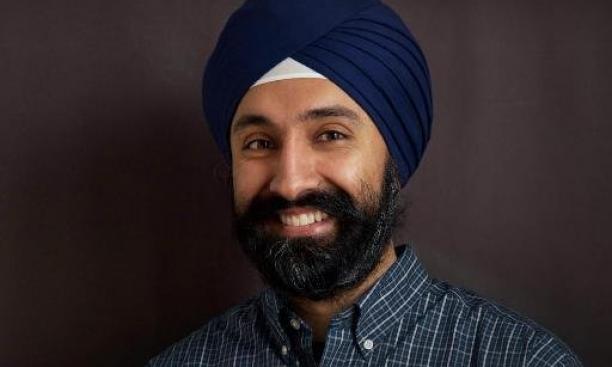
Savraj Singh Dhanjal ’03 knew he wanted to be an entrepreneur from the moment he received his first paycheck in high school for his then-nascent web-design business.
“I remember handing [the client] a floppy disk with the website that I created, and she handed me $700,” Singh says. “And I realized, ‘Holy cow, there’s a business here.’”
Singh maintained the web-design business during his years at Princeton, where he continued to hone his programming skills as a computer science major. The department is now one of the most popular on campus, but Singh remembers that his cohort was so small that “all of the names from the Princeton computer science Class of 2003 easily fit on a coffee mug.”
He entered the job market a few years after the dot-com bubble burst. By 2003, as many companies were beginning to recover, the demand for employees with a computer-science background had begun to rise again, and Singh accepted a job as a program manager at Microsoft headquarters in Redmond, Wash.
After four years of working at Microsoft, he and a few friends left the company to launch their own startup. The business ultimately failed, but it led Singh to his next big idea, which came to him as he watched Barack Obama — in the midst of his 2008 presidential campaign — speaking on TV about the importance of energy conservation.
“Obama was saying that we needed to take all possible steps to save energy, and I thought, ‘Well, let me start with my own house,’” he says. “How much energy am I using right now and how much money am I spending?”
In an attempt to answer these questions, Singh tapped into some of the electrical engineering skills he’d learned at Princeton to build a sensor, which he placed on the surface of his utility meter. He programmed the sensor to gather data about his home energy use and send that data directly to his phone and computer.
“That was a pioneering moment in my life,” Singh says. “Having the realization of, ‘this is something that does not exist, this is something really cool, and something relatively easy to get going as a prototype.’”
After raising funds from angel investors out west, Singh decided to move back to his parents’ house in Pennington, N.J., in order to dedicate all of his time and finances to the business. He began building the sensors and creating the software for what would become known as Wattvision, which Singh describes as a “Fitbit for your home.” Using either Singh’s sensors or a device called a Rainforest EAGLE (which is used to link homes with smart meters to their wireless networks), Wattvision gives users live feedback on their energy use. Wattvision’s sensors upload information from the utility meters several times each minute, allowing users to check their energy use in real time.
“It essentially removes the idea of being surprised by your utility bill,” Singh says.
In 2011, he was approached by Shana Weber, the director of Princeton’s sustainability office. Weber was looking for a way to track energy use across campus and promote energy awareness among students, and Singh was happy to help out. Working closely with the sustainability office, he created Tiger Energy as a way to share data that had been previously confined to computers within Princeton’s facilities office. On http://www.wattvision.com/princeton, users can monitor how much energy any given building on campus is using — including sports facilities, laboratories, and academic buildings. Every year since the launch of Tiger Energy, the facilities department has held a competition among the residential colleges to see which one can use the least amount of energy.
With Tiger Energy now up and running, Singh has begun piling other projects onto his plate, including a new role as chief technology officer at a smoothie company called Daily Harvest.
“One of the most important lessons I’ve learned is iteration — trying new and different things is super important,” Singh says. “If you’re a student now, or even someone working in tech, take on some side projects and commit to spending a certain amount of them. And if they don’t work out, try another project. And keep trying.”
